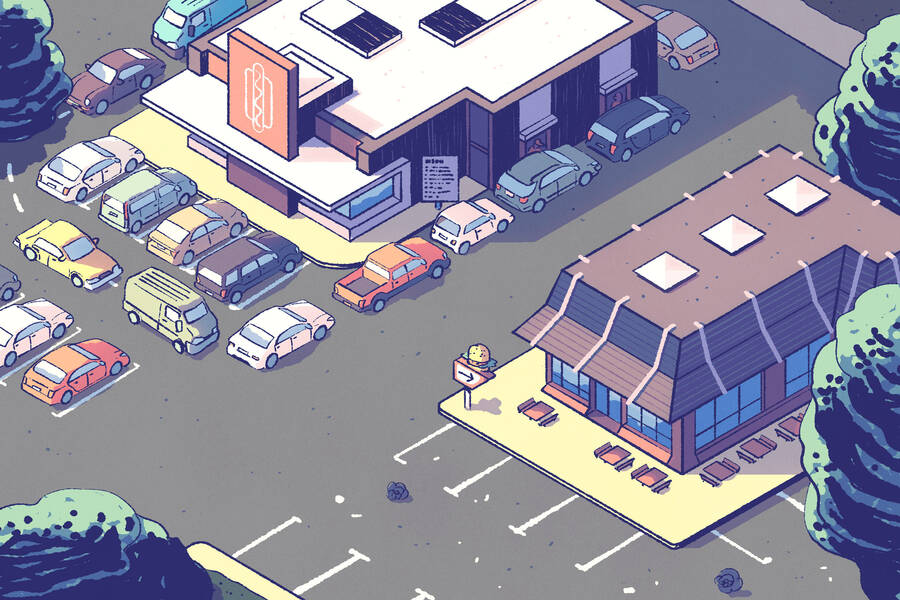But is faster always better?
No, says new research from the Kellogg School. The researchers find that when customers pick out a purchase from a showroom and then need to be home to accept the delivery, speed doesn’t necessarily win out. In this scenario, customers prioritize the convenience of the delivery day over speed. And the day of the week when a customer comes into the showroom can help the company predict which day that customer will find most convenient for delivery.
This knowledge can help retailers that offer attended at-home delivery, which includes many furniture and appliance stores, improve their operations and boost customer satisfaction.
“When Amazon was moving towards same-day delivery, businesses were thinking, ‘Now everybody needs to do this,’” says Sunil Chopra, an operations professor at Kellogg and one of the paper’s coauthors. “But it’s not true in this case. They don’t need to go any faster.”
Understanding customer preferences for delivery timing
The project first emerged when one of Chopra’s former students approached him about helping to solve a delivery puzzle at a high-end mattress company with many showrooms across the U.S., where the former student worked as the head of supply-chain operations.
Customers would come into a showroom, purchase a mattress, and select a delivery day from several options. There was a requirement that someone needed to be home the whole day of the delivery because the exact hour of delivery didn’t get set until later. The company’s goal was to complete delivery within five days. Not only was the company occasionally missing that mark, but it was considering shortening delivery time even further.
The company, then, questioned how it could possibly speed up delivery with the strict requirement that a customer had to be home to receive the order.
Chopra asked his then PhD student, Pol Boada-Collado, to work with the company on the question. Boada-Collado crunched the data from over 30,000 sales transactions at 217 stores in 2016 and 2017, excluding atypical sales periods such as Black Friday and Presidents’ Day.
He then graphed the likelihood that a customer would pick the first available option and got a “funny-shaped curve,” Chopra says.
Some people did pick the earliest available delivery date. But many skipped it and instead chose a date that was later, sometimes by more than a week. It seemed, upon initial analysis, that customers did not necessarily desire the speediest delivery option.
The research team, which included fellow Kellogg faculty members Karen Smilowitz and Maria Ibanez, both in the operations department, next tried to figure out why customers would want a later delivery date.
They found a clear pattern in customer preference for delivery dates based on the day of the week that the customer came into the showroom. And this preference explained why customers were frequently not choosing the quickest possible delivery option.
Specifically, customers who shopped on the weekend were much more likely to want a weekend delivery. So, if they were in the store on a Saturday, then they would generally choose the next available Saturday, even if it meant pushing delivery back a week or more (the company didn’t deliver on Sundays). In contrast, customers who shopped on a weekday were generally more flexible.
“Most customers prefer weekends, but the people that show up on weekends prefer them by a lot, so they’re not going to take a weekday delivery,” Chopra says. “People that show up on weekdays often have a little more flexibility.”
“This segmentation is particularly helpful in designing appropriate delivery options for infrequent and large purchases like mattresses, where retailers have little information about customers,” he adds.
Shaping operations around customer preference
After the researchers understood the customers’ motivations, they tested how the company could use this information to improve operations.
The company offered deliveries Tuesday through Saturday. The researchers were curious if offering deliveries on Sundays might reduce delivery time and improve customer satisfaction. But instead of simply adding Sunday as an option for customers, thereby incurring additional costs, they assessed the potential benefits of shifting some of the company’s deliveries from Wednesday or Thursday (the least popular delivery days among customers) to Sunday.
They found that transferring some deliveries from Wednesday to Sunday would, in fact, improve delivery speed, though the same was not true about Thursday. Ultimately, shifting capacity from Wednesday to Sunday only inconvenienced a few people (compared with Thursday or other weekdays) while benefiting many who wanted a weekend delivery. And shifting delivery days rather than adding new ones helped ensure that the overall cost of delivery did not increase.
“The shift drives customer satisfaction and, if there are days you can reduce capacity, there’s also a potential cost savings,” Chopra says.
There are other ways the company could use the findings to reduce delivery time and potentially save money, he explains. For example, it might make sense to “hide” prized weekend delivery options from weekday customers, who are more likely to accept a weekday delivery option. This would reserve the weekend delivery option for weekend shoppers, benefitting the store by helping it reduce delivery time.
A unique type of shopping and delivery experience
These results apply to a particular shopping experience: a trip to the retailer followed by an attended home delivery.
In addition to large furniture and appliance purchases, those that require construction, like a garden shed, or installation, like a home cinema or alarm system, follow a similar pattern.
However, the biggest segment of attended home deliveries—online grocery purchases—work differently. Namely, grocery shopping is done online, meaning the customer might be at work or on the train while they drop items in the cart.
Unlike with showroom purchases, “when the [online] order is placed, you can’t infer anything about customer preferences,” Chopra says. “When people show up in person, it tells you something about their preferences.”
Still, the unexpected nature of the findings confirms there remain key learning opportunities for companies seeking to optimize their delivery operations. Companies may, at the least, want to take care not to assume that faster is always better, regardless of the type of shopping experience they offer.
“In the race for customer satisfaction at reasonable cost,” Boada-Collado says, “the fastest does not always win.”




